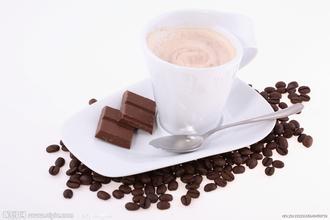Description of Taste and Flavor of Coffee and Bean washing method introduction to Grinding and Calibration treatment of varieties in producing areas
Description of Taste and Flavor of Coffee and Bean washing method introduction to Grinding and Calibration treatment of varieties in producing areas
The adhesion of the mucous membrane is very strong and is not easy to remove. It must be placed in the slot for about 18-36 hours to make it alcohol and decompose the mucous membrane. There are two methods of fermentation, namely wet hair alcohol and dry hair alcohol, as the name implies, the former adds water, the latter does not add water. In the process of producing alcohol, the seeds and internal pulp will produce special changes, which is one of the steps that most affect the flavor of coffee. Some farms will add hot water or alkanolins to speed up the production of alcohol, which will have a negative impact on quality and is not welcomed by selected coffee lovers after washing. At this time, the coffee beans are still wrapped in the pericarp with a moisture content of 50%. It must be dried to reduce the moisture content to 12%, otherwise they will continue to be mellow, moldy and rotten. The better treatment is to use sunlight to dry, although it will take 1-3 weeks, but the flavor is very good and very popular. In addition, machine drying is used in some places, which greatly shortens the processing time and makes the flavor inferior to that of sun-dried coffee.
Silver Skin/Chaff: there is a thinner film inside the parchment that wraps the coffee beans. Because the color is glossy and silvery, people used to call it "silver skin". This layer of silver will fall off during baking. Usually when you grind the coffee, you find some silver crumbs in the coffee powder. These crumbs are the silver Mucilage that cannot be peeled off from the coffee beans during baking: under the skin and pulp, a thick layer of mucus tightly wraps the coffee beans. Because this mucous membrane is extremely sticky and high in sugar, it is used to call it "Honey". Not only coffee, but also many fruits have a layer of mucus inside. You can check http://en.wikipedia.org/wiki/Mucilage for information about the peel and Skin/Pulp: the outermost layer of coffee beans is covered with berry-like skin and pulp. In addition to the natural sun method, coffee beans treated by other methods must remove the skin and flesh within a few hours after picking. Similar to the cherries we often eat, the difference is that when we eat cherries, we mainly eat the pulp and peel of berries. For coffee, peel and pulp are important by-products. In some places, people use the peel and pulp of coffee to make tea. People in the industry used to call the peel and pulp of coffee "Pulp". The machine used to remove the pulp is called the "desizing machine".

Important Notice :
前街咖啡 FrontStreet Coffee has moved to new addredd:
FrontStreet Coffee Address: 315,Donghua East Road,GuangZhou
Tel:020 38364473
- Prev

How to mix coffee beans-- A graphic introduction to the baking degree of proportional formula
How to mix coffee beans-- proportional formula roasting degree diagram shows how coffee beans are cooked? This method is simple and does not affect the taste of coffee, but we must pay attention to the temperature of brewing water and the temperature of coffee liquid, otherwise it will affect the taste. The coffee beans here had better be freshly roasted and freshly ground, so as to ensure the aroma and taste of the coffee if the ground particles are still
- Next

How to preserve freshly roasted coffee beans-Starbucks concentrated roasted coffee beans
How to preserve freshly roasted coffee beans-Starbucks concentrated roasted coffee beans 1. The air in the refrigerator is cold and dry, so it is easy to evaporate the water inside the coffee beans and lose the fragrance. two。 There are too many odors in the refrigerator. 3. Due to the low temperature in the refrigerator, when the coffee beans are taken out of the refrigerator, they encounter relatively hot air and will condense into water vapor to cover the surface of the coffee beans.
Related
- Guji coffee producing area of Guji, Ethiopia: Humbela, Shakiso, Wulaga
- What is the most expensive variety of Qiloso in BOP multi-variety group?
- How to store the coffee beans bought home?
- Why are Yemeni coffee beans so rare now?
- Ethiopian Sidamo all Red Fruit Sun Sun Santa Vini Coffee beans
- SOE is mostly sour? What does it mean? Is it a single bean? what's the difference between it and Italian blending?
- Is Italian coffee beans suitable for making hand-brewed coffee?
- How to choose coffee beans when making cold coffee? What kind of coffee beans are suitable for making cold coffee?
- Just entered the pit to make coffee, what kind of coffee beans should be chosen?
- Can only Japan buy real Blue Mountain Coffee? What are authentic Jamaican Blue Mountain coffee beans?

